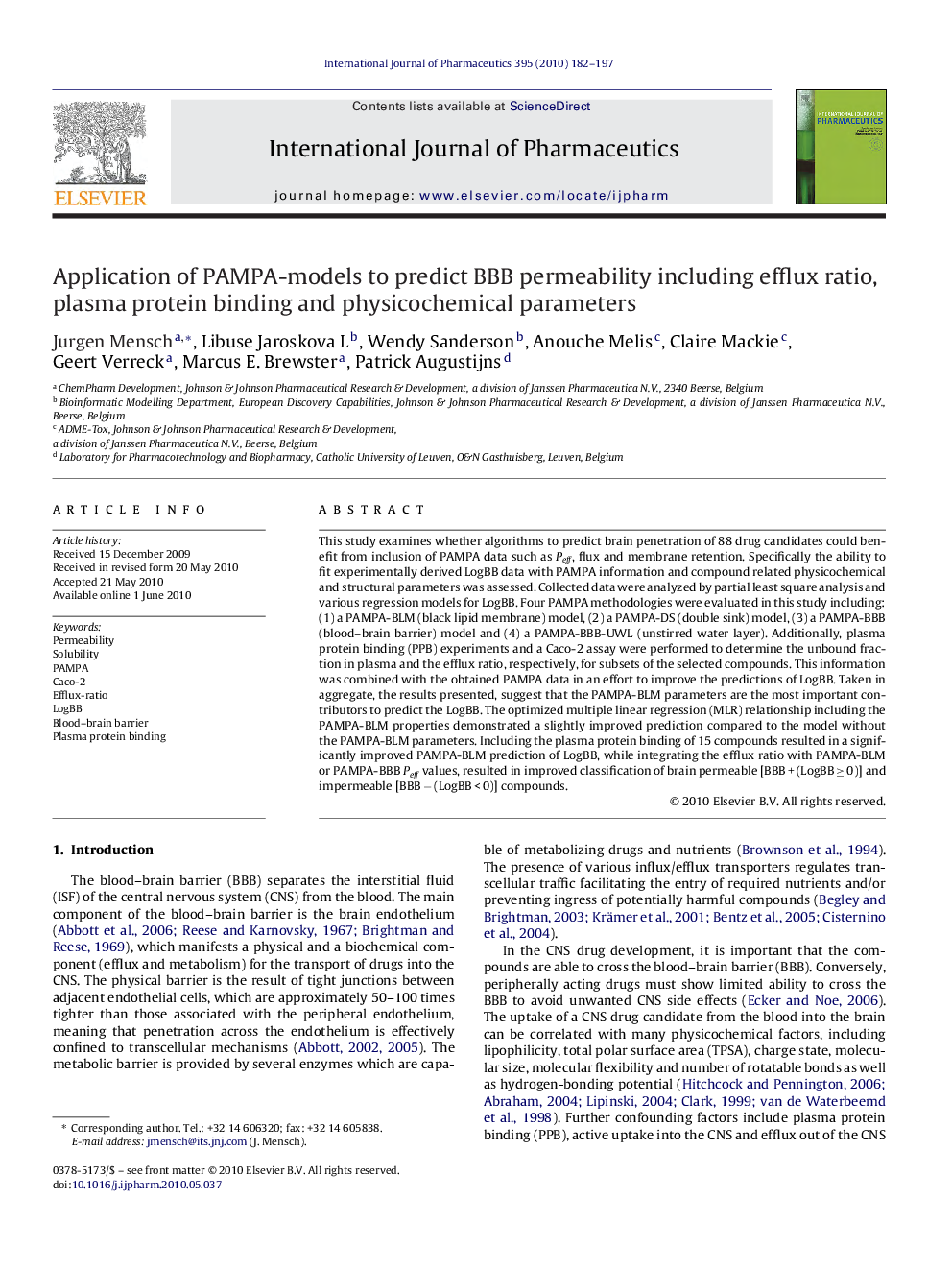| Article ID | Journal | Published Year | Pages | File Type |
|---|---|---|---|---|
| 2503980 | International Journal of Pharmaceutics | 2010 | 16 Pages |
This study examines whether algorithms to predict brain penetration of 88 drug candidates could benefit from inclusion of PAMPA data such as Peff, flux and membrane retention. Specifically the ability to fit experimentally derived LogBB data with PAMPA information and compound related physicochemical and structural parameters was assessed. Collected data were analyzed by partial least square analysis and various regression models for LogBB. Four PAMPA methodologies were evaluated in this study including: (1) a PAMPA-BLM (black lipid membrane) model, (2) a PAMPA-DS (double sink) model, (3) a PAMPA-BBB (blood–brain barrier) model and (4) a PAMPA-BBB-UWL (unstirred water layer). Additionally, plasma protein binding (PPB) experiments and a Caco-2 assay were performed to determine the unbound fraction in plasma and the efflux ratio, respectively, for subsets of the selected compounds. This information was combined with the obtained PAMPA data in an effort to improve the predictions of LogBB. Taken in aggregate, the results presented, suggest that the PAMPA-BLM parameters are the most important contributors to predict the LogBB. The optimized multiple linear regression (MLR) relationship including the PAMPA-BLM properties demonstrated a slightly improved prediction compared to the model without the PAMPA-BLM parameters. Including the plasma protein binding of 15 compounds resulted in a significantly improved PAMPA-BLM prediction of LogBB, while integrating the efflux ratio with PAMPA-BLM or PAMPA-BBB Peff values, resulted in improved classification of brain permeable [BBB + (LogBB ≥ 0)] and impermeable [BBB − (LogBB < 0)] compounds.
